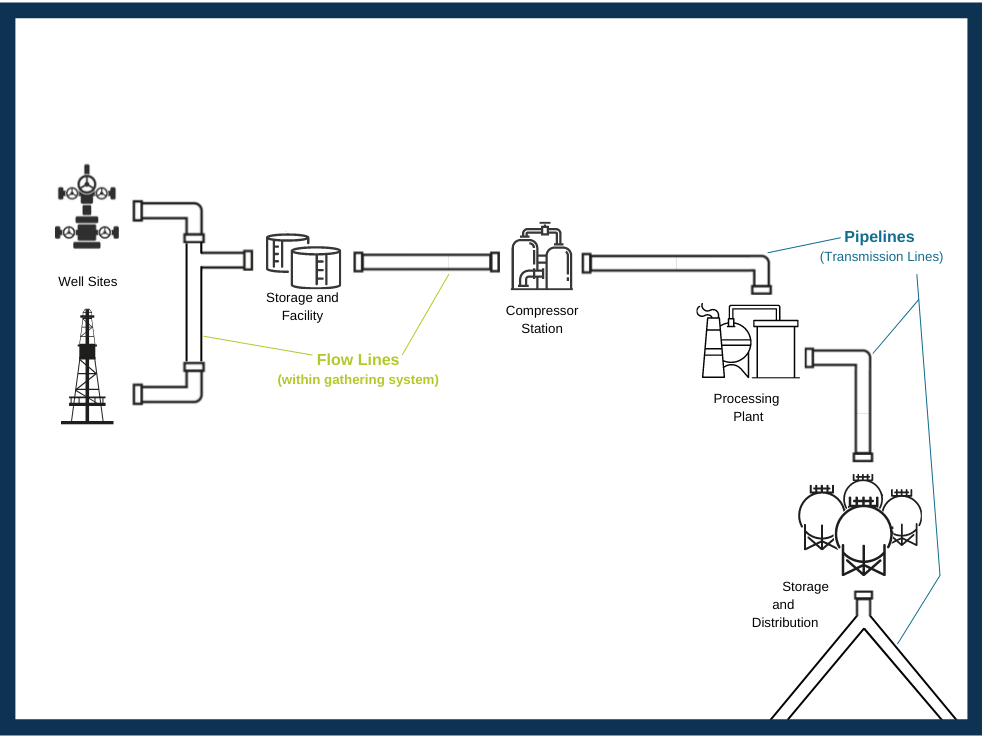Pipelines in British Columbia must meet the National Standard of Canada CSA Z662 – Oil and Gas Pipeline Systems. Pipelines that remain within provincial borders are regulated by the BC Energy Regulator. Pipelines that cross provincial boundaries are regulated federally by the Canada Energy Regulator.
Pipelines within the gathering system, known as flow lines, take petroleum and natural gas products from wells to processing facilities. Pipelines not considered to be flow lines are part of the transmission system carrying products from processing facilities to distribution systems and consumers.
Within British Columbia, flow lines are defined separately to give the Surface Rights Board (SRB) jurisdiction for resolving disputes regarding flow lines within the gathering system.
Defining Flow Lines
A flow line is defined in the Oil and Gas Activities Act as:
“a pipeline that connects a well head with a scrubbing, processing or storage facility and that precedes the transfer of the conveyed substance to or from a transmission, distribution or transportation line.”
The ‘Analysis’ section of the SRB’s decision regarding Order 1911/1913 (page 6) lists additional cases when pipelines were determined to be part of a gathering system for the production of natural gas.
The Orders and Decisions chart lists these cases and provides a link to the associated decision made by the SRB.
Defining Pipelines
A pipeline is part of the transmission system that carries products from processing facilities to distribution systems and consumers.
According to the Oil and Gas Activities Act, a pipeline means:
“piping through which any of the following is conveyed:
- petroleum or natural gas;
- water produced in relation to the production of petroleum or natural gas or conveyed to or from a facility for disposal into a pool or storage reservoir;
- solids;
- substances prescribed under section 133 (2) (v) of the Petroleum and Natural Gas Act;
- other prescribed substances
And includes installations and facilities associated with the piping, but does not include:
- piping used to transmit natural gas at less than 700 kPa to consumers by a gas utility as defined in the Gas Utility Act
- a well head, or
- anything else that is prescribed;”




Recent Comments